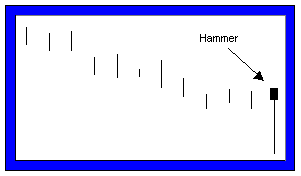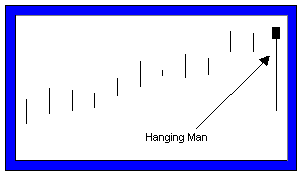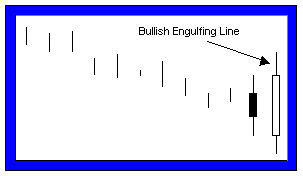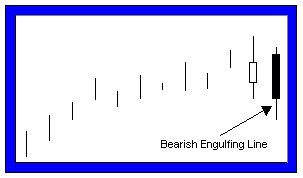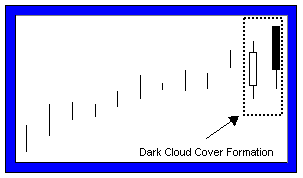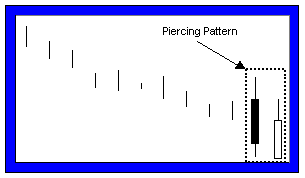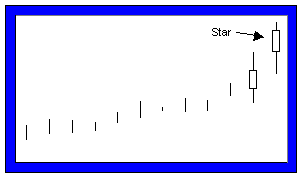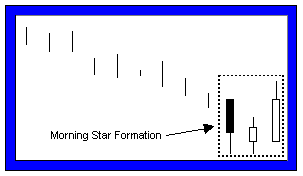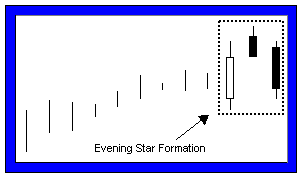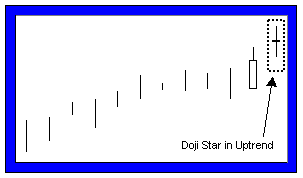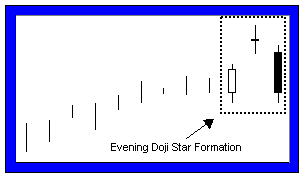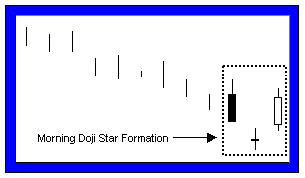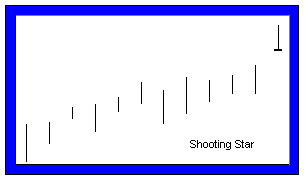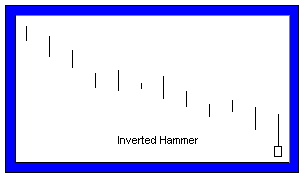Bar Compared to Candlestick Charts Below is an example of the same price data conveyed in a standard bar chart and a candlestick chart. Notice how the candlestick chart appears 3-dimensional, as price data almost jumps out at you.
The long, dark, filled-in real bodies represent a weak (bearish) close ( 3a ), while a long open, light-colored real body represents a strong (bullish) close ( 3b ). It is important to note that Japanese candlestick analysts traditionally view the open and closing prices as the most critical of the day. At a glance, notice how much easier it is with candlesticks to determine if the closing price was higher or lower than the opening price.
Common Candlestick Terminology The following is a list of some individual candlestick terms. It is important to realize that many formations occur within the context of prior candlesticks. What follows is merely a definition of terms, not formations.
The Black Candlestick -- when the close is lower than the open. The White Candlestick -- when the close is higher than the open. The Shaven Head -- a candlestick with no upper shadow. The Shaven Bottom -- a candlestick with no lower shadow. Spinning Tops -- candlesticks with small real bodies, and when appearing within a sideways choppy market, they represent equilibrium between the bulls and the bears. They can be either white or black. Doji Lines -- have no real body, but instead have a horizontal line. This represents when the Open and Close are the same or very close. The length of the shadow can vary.
Candlestick Reversal Patterns Just as many traders look to bar charts for double tops and bottoms, head-and-shoulders, and technical indicators for reversal signals, so too can candlestick formations be looked upon for the same purpose. A reversal does not always mean that the current uptrend/downtrend will reverse direction, but merely that the current direction may end. The market may then decide to drift sideways. Candlestick reversal patterns must be viewed within the context of prior activity to be effective. In fact, identical candlesticks may have different meanings depending on where they occur within the context of prior trends and formations.
Hammer -- a candlestick with a long lower shadow and small real body. The shadow should be at least twice the length of the real body, and there should be no or very little upper shadow. The body may be either black or white, but the key is that this candlestick must occur within the context of a downtrend to be considered a hammer. The market may be "hammering" out a bottom. Hanging Man -- identical in appearance to the hammer, but appears within the context of an uptrend. Engulfing Patterns -- Bullish -- when a white, real body totally covers, "engulfs" the prior day's real body. The market should be in a definable trend, not chopping around sideways. The shadows of the prior candlestick do not need to be engulfed.
Bearish -- when a black, real body totally covers, "engulfs" the prior day's real body. The market should be in a definable trend, not chopping around sideways. The shadows of the prior candlestick do not need to be engulfed.
Dark-Cloud Cover (bearish)-- a top reversal formation where the first day of the pattern consists of a strong white, real body. The second day's price opens above the top of the upper shadow of the prior candlestick, but the close is at or near the low of the day, and well into the prior white, real body. Piercing Pattern (bullish) -- opposite of the dark-cloud cover. Occurs within a downtrend. The first candlestick having a black, real body, and the second has a long, white, real body. The white day opens sharply lower, under the low of the prior black day. Then, prices close above the 50% point of the prior day's black real body. Stars
These candlestick formations consist of a small real body that gaps away from the real body preceding it. The real body of the star should not overlap the prior real body. The color of the star is not too important, and they can occur at either tops or bottoms. Stars are the equivalent of gaps on standard bar charts.
Stars make up part of four separate reversal patterns: Morning Star
Shooting Star (Inverted Hammer)
Morning Star-- this is a bullish bottom reversal pattern. The formation is comprised of 3 candlesticks. The first candlestick is a tall black real body followed by the second, a small real body, which gaps (opens), lower (a star pattern). The third candlestick is a white real body that moves well into the first period's black real body. This is similar to an island pattern on standard bar charts.
Evening Star --- a bearish top reversal pattern and counterpart to the Morning Star. Three candlesticks compose the evening star, the first being long and white. The second forms a star, followed by the third, which has a black real body that moves sharply into the first white candlestick. Doji Stars -- When a doji gaps above a real body in an uptrend, or gaps under a real body in a falling market, that particular doji is called a doji star. Two popular doji stars are the evening star and the morning star.
Evening Doji Star -- a doji star in an uptrend followed by a long, black real body that closed well into the prior white real body. If the candlestick after the doji star is white and gapped higher, the bearishness of the doji is invalidated. Morning Doji Star -- a doji star in a downtrend followed by a long, white real body that closes well into the prior black real body. If the candlestick after the doji star is black and gapped lower, the bullishness of the doji is invalidated.
Shooting Star -- a small real body near the lower end of the trading range, with a long upper shadow. The color of the body is not critical. Not usually considered a major reversal sign, only a warning.
Inverted Hammer-- not really a star, but does look like a shooting star. When occurring within a downtrend, may be a turning signal. Body color is not critical.
Final Thoughts and Credits It is important to realize that this introduction is just that, an introduction to candlestick analysis. After having read this, you will have merely scratched the surface of the many patterns and variables that can go into candlestick analysis. No attempt was made to provide a thorough analysis of each and every pattern. In fact, many formations were left out as they cross the border into more complicated analysis. For a more complete overview of candlestick analysis, it is highly recommended that you read the book that is referred to below. A large portion of the material in this introduction is taken from an excellent book called Japanese Candlestick Charting Techniques: A Contemporary Guide to the Ancient Investment Techniques of the Far East. (You can find this book in The PitMaster's Bookstore.) In some cases, sentences were taken almost verbatim, as there was no better way to say what Mr. Steve Nison, the author, already said. In his book, Mr. Nison, completely explains candlesticks and their formations, but more importantly explains how to combine candlestick analysis with traditional technical analysis. It is highly recommended that you consider purchasing this book. As traders, we need as many trading tools in our arsenal, and a basic knowledge of candlesticks provides a trader much needed ammunition. Also remember that no matter what the trading tool, no matter how advanced or ancient, it is only effective when put into practice properly. This is, of course, your job as the trader.
|











